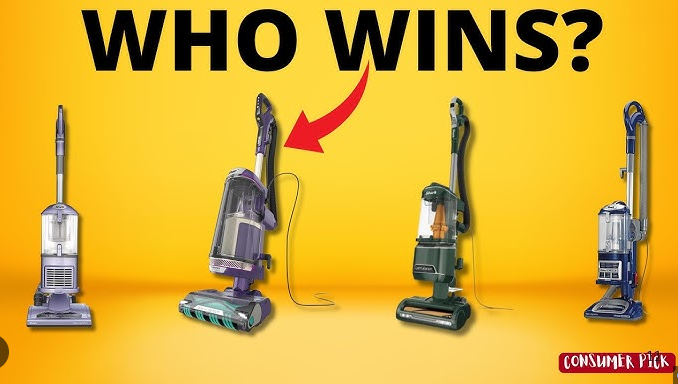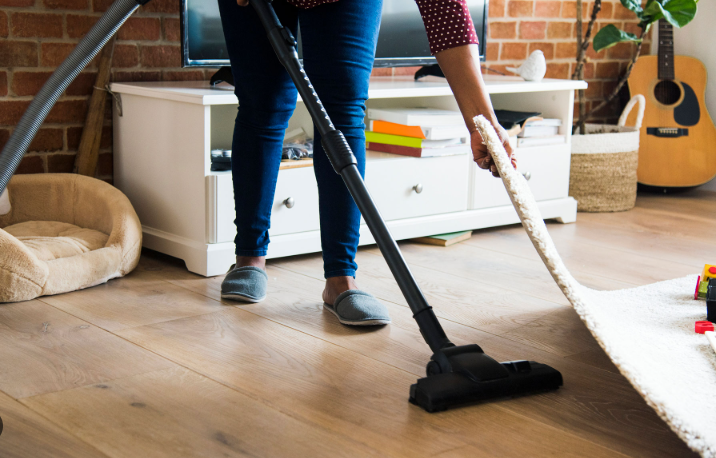Pet hair can be a persistent challenge for pet owners, clinging to carpets, furniture, and clothing. Knowing how to remove pet hair with a vacuum cleaner is essential for maintaining a clean, allergy-friendly home. With the right techniques, attachments, and maintenance, your vacuum can effectively tackle pet hair while keeping your space fresh. In this comprehensive guide, we’ll cover step-by-step methods, expert vacuum cleaner tips, and advice on vacuum cleaner setup to ensure optimal pet hair removal. Whether you own a portable vacuum cleaner or a robot model, we’ll also address vacuum cleaner maintenance and troubleshooting to keep your machine pet-hair-ready.
Why Removing Pet Hair with a Vacuum Cleaner Is Important
Pet hair not only affects your home’s appearance but also traps dander, a common allergen. Using a vacuum cleaner properly can remove pet hair efficiently, improve air quality, and reduce cleaning time. This guide focuses on how to clean with a vacuum cleaner to target pet hair on various surfaces, from carpets to sofas, while ensuring vacuum cleaner safety. With the right approach, your vacuum can handle even the most stubborn fur, making it a must-have tool for pet owners.
Step-by-Step Guide: How to Remove Pet Hair with a Vacuum Cleaner
1. Choose the Right Vacuum and Attachments
Selecting a vacuum designed for pet hair is crucial. Look for models with:
- Strong Suction: High-powered vacuums (e.g., Dyson, Shark, Miele) excel at lifting pet hair.
- Pet-Specific Tools: Turbo brushes, motorized pet tools, or tangle-free rollers are ideal.
- HEPA Filters: Trap dander and allergens for cleaner air.
- Tangle-Free Brushes: Prevent hair from wrapping around rollers (common in Roomba j7+, Shark Stratos).
Recommended Attachments:
- Pet Hair Tool: Mini motorized brushes for upholstery and stairs.
- Upholstery Brush: Soft bristles for delicate fabrics like sofas.
- Crevice Tool: Reaches tight spaces like couch seams.
- Rubber Rollers: Ideal for robot or stick vacuums to avoid hair tangles.
Tip: For vacuum cleaner setup, ensure the pet tool is properly attached per the manual. Visit VacuumCleanerT for model-specific guides.
2. Prepare Your Space
Before vacuuming, set up your home for effective pet hair removal:
- Remove Loose Items: Clear toys, blankets, or cords to avoid clogs.
- Brush Pets: Groom your pet to reduce loose hair before vacuuming.
- Check Vacuum: Ensure the dustbin or bag is empty and filters are clean.
- Robot Vacuums: Clear obstacles and set no-go zones via the app to focus on pet-heavy areas.
Tip: Use a rubber glove or pet hair roller to loosen hair from furniture before vacuuming for better results.

3. Vacuum with Proper Technique
Effective pet hair removal requires specific vacuuming techniques:
- Slow, Overlapping Strokes: Move slowly in straight lines, overlapping passes to lift embedded hair.
- Multiple Directions: Vacuum carpets and rugs in north-south, then east-west patterns to dislodge hair.
- High Suction for Carpets: Use turbo or max mode for thick carpets where pet hair embeds deeply.
- Low Suction for Upholstery: Use a pet tool or upholstery brush on low power to avoid damaging fabrics.
- Robot Vacuums: Schedule daily runs in pet-heavy areas; use spot-clean mode for concentrated hair buildup.
Tip: For how to use a vacuum cleaner on sofas, go with the fabric grain and test low suction on delicate materials.
4. Target Pet-Heavy Areas
Focus on areas where pet hair accumulates most:
- Furniture: Use a pet hair tool or upholstery brush on sofas, pet beds, and chairs.
- Carpets and Rugs: Vacuum high-traffic areas like near pet beds or litter boxes multiple times.
- Under Furniture: Use a crevice tool or low-profile robot vacuum to reach under sofas or tables.
- Stairs: Use a handheld or pet tool for thorough cleaning of pet hair on steps.
5. Post-Vacuum Cleaning
After vacuuming, ensure your vacuum stays ready for pet hair:
- Empty Dustbin/Bag: Empty bagless bins after each use; replace bags when two-thirds full.
- Clean Brushes: Remove pet hair from rollers and attachments to prevent tangles.
- Wipe Down: Clean the vacuum’s exterior and tools to remove dander buildup.
Tip: Regular vacuum cleaner maintenance is critical for pet hair removal. See below for detailed care tips.
Vacuum Cleaner Safety Tips for Pet Hair Removal
Ensure vacuum cleaner safety while tackling pet hair:
- Unplug Before Cleaning: Disconnect corded vacuums before removing hair from brushes or checking for clogs.
- Avoid Large Debris: Pick up pet toys or bones to prevent motor damage.
- Test Fabrics: Use low suction on delicate upholstery to avoid pulling threads.
- Robot Vacuums: Set boundaries to avoid pet bowls or litter boxes.
- Pet Safety: Keep pets away during vacuuming to avoid startling them.
Vacuum Cleaner Setup for Pet Hair Removal
Proper vacuum cleaner setup enhances pet hair removal efficiency:
- Read the Manual: Follow instructions for attaching pet-specific tools.
- Smart Vacuums: Connect to Wi-Fi for app control; set pet-heavy zones for robot models.
- Charge Cordless Models: Fully charge before use to handle heavy pet hair loads.
- Test Attachments: Ensure pet tools are secure and functioning before starting.
Tip: For robot vacuums, allow 1-2 mapping runs to optimize cleaning paths. Visit VacuumCleanerT for setup guides.
Vacuum Cleaner Troubleshooting for Pet Hair Issues
Pet hair can cause vacuum issues. Here are vacuum cleaner troubleshooting solutions:
- Weak Suction: Check for clogs in hoses, filters, or pet tools; empty dustbin.
- Tangled Brush Roll: Cut away hair with scissors; use tangle-free models for easier maintenance.
- Loud Noises: Inspect for hair wrapped around rollers or debris in the airflow path.
- Robot Errors: Clean sensors and wheels; reset maps if navigation falters.
Tip: For persistent issues, check vacuum cleaner troubleshooting resources at VacuumCleanerT.
Vacuum Cleaner Maintenance for Pet Hair Removal
Regular vacuum cleaner maintenance is vital for consistent pet hair removal:
- Filters: Rinse washable HEPA filters monthly; replace non-washable ones every 6–12 months to trap dander.
- Brushes: Clean pet tools and rollers weekly to remove hair buildup.
- Dustbin/Bags: Empty bins after each use; replace bags before overfilling to maintain suction.
- Hoses: Inspect for hair clogs monthly; use a flexible rod to clear blockages.
- Robot Sensors: Wipe sensors and cameras biweekly to ensure accurate navigation.

Additional Tips for Removing Pet Hair with a Vacuum Cleaner
Enhance your pet hair removal strategy with these vacuum cleaner tips:
- Use a Lint Roller First: Loosen pet hair on furniture with a lint roller before vacuuming.
- Vacuum Frequently: Daily or biweekly vacuuming prevents hair buildup in high-shedding seasons.
- Combine with Grooming: Regular pet brushing reduces loose hair in your home.
- Choose Pet-Friendly Models: Opt for vacuums with tangle-free rollers or high suction (e.g., Dyson V15, Roomba j7+).
- Spot Clean: Use handheld or spot-clean modes for concentrated pet hair areas like pet beds.
Recommended Vacuums for Pet Hair Removal
Based on expert tests (e.g., Consumer Reports, Wirecutter) and user reviews, here are top picks for pet hair:
- Dyson V15 Detect ($700–$800): Powerful suction, pet hair tool, and HEPA filter; ideal for carpets and upholstery.
- Shark Stratos Upright ($500–$600): Odor-neutralizing technology and tangle-free rollers for pet owners.
- iRobot Roomba j7+ ($700–$800): Tangle-free brushes and poop-avoidance for hands-free pet hair cleanup.
- Bissell Pet Hair Eraser Handheld ($70–$90): Affordable, portable option for quick furniture cleanups.
Conclusion: Master How to Remove Pet Hair with a Vacuum Cleaner
Learning how to remove pet hair with a vacuum cleaner ensures a cleaner, healthier home for you and your pets. By choosing the right vacuum, using proper techniques, and maintaining your machine, you can tackle pet hair on carpets, furniture, and beyond. Regular vacuum cleaner maintenance and vacuum cleaner troubleshooting keep your vacuum performing at its best. For more guidance on how to use a vacuum cleaner or selecting the best vacuum cleaner for pet hair, explore our best vacuum cleaner guide at VacuumCleanerT today.